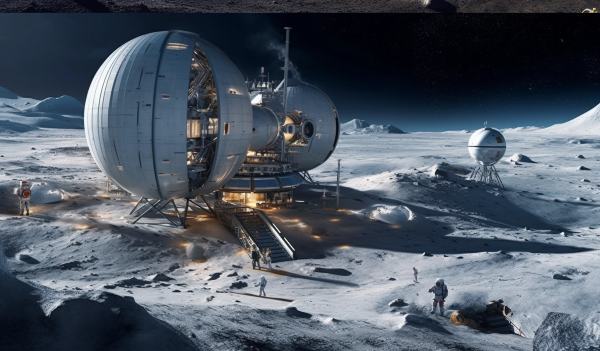
With advancements in space exploration, significant time and resources have recently been invested in technologies for effective space resource utilization. A particular focus has been placed on finding the best method to produce oxygen on the Moon.
In October, the Australian Space Agency and NASA signed an agreement to send an Australian-made rover to the Moon as part of the Artemis program. The goal is to collect lunar rocks that could potentially provide breathable oxygen on the Moon.
While the Moon does have an atmosphere, it is thin and primarily composed of hydrogen, neon, and argon. This gaseous mixture is insufficient to sustain oxygen-dependent mammals like humans.
However, there is an abundance of oxygen on the Moon, albeit not in a gaseous form. It is trapped within the regolith, the layer of rock and fine dust covering the Moon’s surface. If we can extract oxygen from the regolith, could it be enough to support human life on the Moon?
Oxygen can be found in many minerals in the ground, and the Moon is primarily composed of similar rocks to those on Earth, albeit with a slightly higher meteor-derived material content.
Minerals such as silica, aluminium, iron, and magnesium oxides dominate the lunar landscape. While these minerals contain oxygen, it is not readily accessible for our lungs.
On the Moon, these minerals exist in various forms, including hard rock, dust, gravel, and stones covering the surface. These materials have been shaped by the impacts of meteorites over countless millennia.
Some people refer to the Moon’s surface layer as lunar “soil,” but as a soil scientist, I hesitate to use this term. Soil, as we know it on Earth, is a remarkable substance that has been created by a multitude of organisms working on the parent material, regolith derived from hard rock, over millions of years.
The result is a matrix of minerals that were not present in the original rocks. Earth’s soil possesses exceptional physical, chemical, and biological characteristics. In contrast, the materials on the Moon’s surface consist primarily of untouched regolith.
The Moon’s regolith consists of approximately 45 percent oxygen, tightly bound within the mentioned minerals. To break these strong bonds, energy input is required.
If you are familiar with electrolysis, you may understand this process. On Earth, electrolysis is commonly used in manufacturing, such as producing aluminium. By passing an electrical current through a liquid form of aluminium oxide (alumina) via electrodes, aluminium is separated from oxygen.
In this case, oxygen becomes the main product, and the extracted aluminium (or other metals) becomes a potentially useful byproduct.
While the process is relatively straightforward, it is energy-intensive. To be sustainable, it would need to rely on solar energy or other energy sources available on the Moon.
Extracting oxygen from regolith would also necessitate substantial industrial equipment. Solid metal oxides would need to be converted into a liquid form through heat or a combination of heat, solvents, or electrolytes. Although we possess the technology to do this on Earth, transporting and operating such equipment on the Moon poses a significant challenge.
Earlier this year, Belgium-based startup Space Applications Services announced the development of three experimental reactors to enhance the oxygen production process through electrolysis. They plan to send this technology to the Moon by 2025 as part of the European Space Agency’s in-situ resource utilization (ISRU) mission.
When we successfully achieve this feat, how much oxygen could the Moon potentially deliver? As it turns out, quite a significant amount.
If we disregard oxygen bound in the Moon’s deeper hard rock materials and focus solely on easily accessible regolith on the surface, we can estimate its potential.
On average, each cubic meter of lunar regolith contains 1.4 tonnes of minerals, including approximately 630 kilograms of oxygen. According to NASA, humans require about 800 grams of oxygen per day to survive. Therefore, 630 kg of oxygen would be sufficient to sustain an individual for around two years or slightly more.
Let’s assume the average depth of regolith on the Moon is approximately ten meters, and we are able to extract all the oxygen from this layer. In that case, the top ten meters of the Moon’s surface could provide enough oxygen to support the entire population of eight billion people on Earth for approximately 100,000 years.
Of course, achieving such numbers would depend on the efficiency of oxygen extraction and utilization. Nevertheless, this figure is truly remarkable.
However, it’s important to acknowledge that we are fortunate here on Earth. We must make every effort to protect our blue planet, especially its soil, which continues to support terrestrial life effortlessly.
This article was originally published on The Conversation by John Grant at Southern Cross University. Read the original article here.
(Story by John Grant)


dAmfhXySKerETnVx